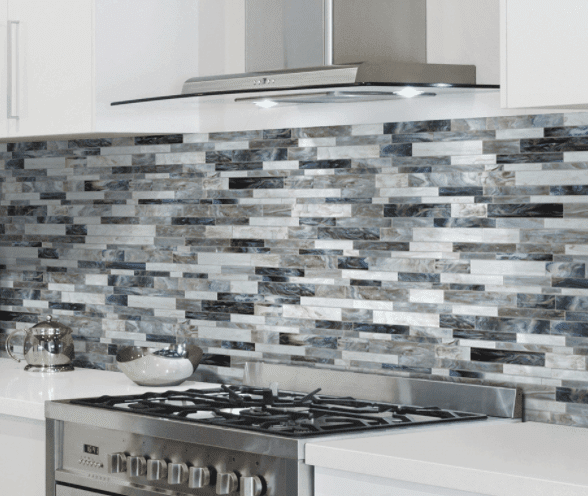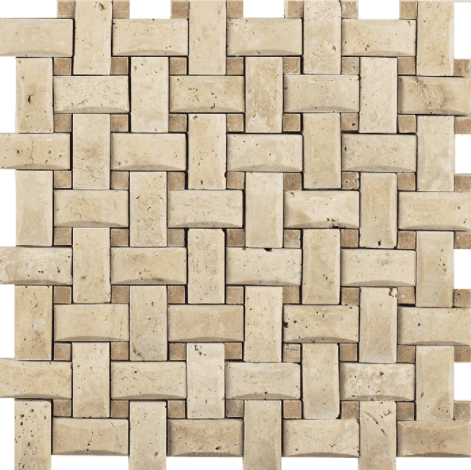
We often get questions about the difference between mosaic tile and accent tile. It’s easy to get confused about how these two types of tile differ. So, let’s take a look at some examples and help clear it up in case you’re wondering the same thing!
Traditionally, a mosaic is a decorative design or work of art made up of small materials (such as pieces of stone or glass) arranged to create a pattern or image. Mosaic is an ancient art form dating back centuries, and it remains popular in home design today.

In the tile world, a mosaic is defined as an inlay design pattern with tiles smaller than 2×2”. Individual mosaic patterns vary greatly, featuring a multitude of different materials, colors, and tile shapes. Popular materials include glass, natural stone, metal, and porcelain. Available shapes and styles include square, penny round, arabesque, mini brick, basketweave, hexagon, chevron, herringbone, and more. Each combination of materials and shapes is great for making a stylish, intricate statement in areas such as backsplashes, bathroom walls, shower and tub surrounds, fireplaces, and even floors. Whether you want to add a modern touch to your kitchen or bring timeless charm into your bathroom, mosaic tile is a beautiful way to do so.

Much of the confusion about the difference between mosaic and accent tile comes from the fact that mosaics are often used as an accent or border to other tile designs. The two categories can certainly overlap, but accent tile is not necessarily mosaic in nature. Accent tiles can be much larger in size than mosaic tiles, and the accent category includes non-mosaic products like liners and trim.
As you can see, defining mosaic tile is certainly not an exact science. No matter the definition, Arizona Tile has a great selection of mosaic tiles to give personality and charm to your next home remodel project.





